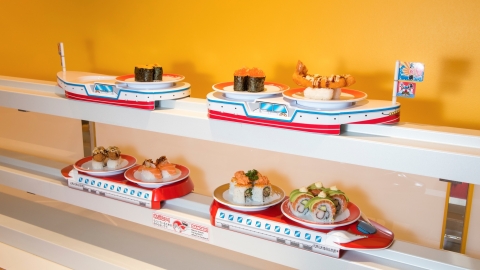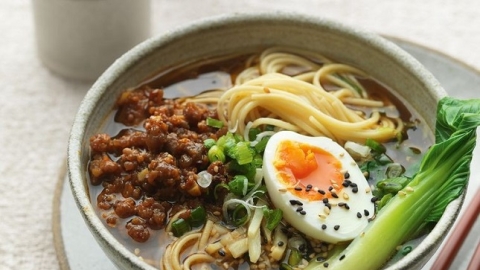Wagashi is the general name for traditional Japanese sweets. Originally used in traditional tea ceremonies, wagashi are more carefully flavored than other foods, and are presented beautifully and artistically, so they are also considered edible works of art. Wagashi are one of the representatives of Japanese culture and play an important role in daily life in this country.
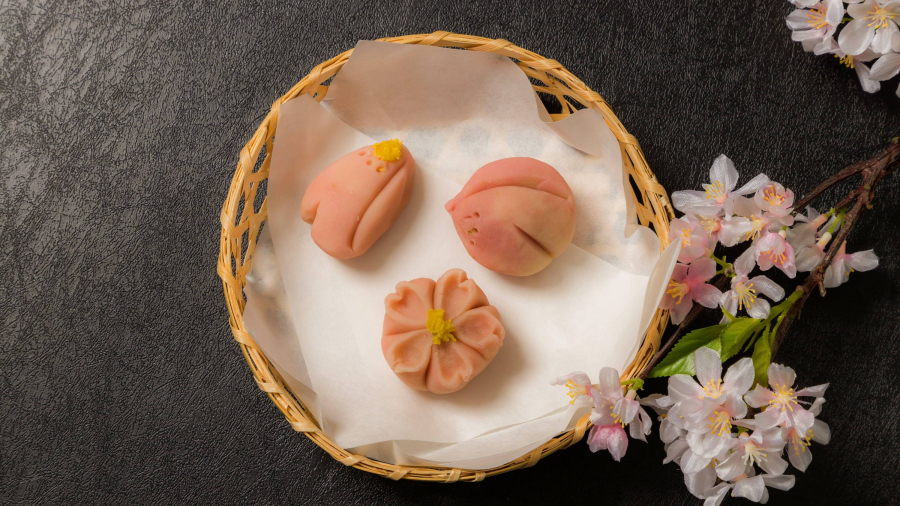
The origin of wagashi is formed from ancient cakes made of rice, millet, other grains along with nuts and fruits commonly used in the daily diet in Japan at that time. This delicate sweet is one of the great "pride" of the Japanese people. Its name - wagashi, literally means "flower cake" and in fact, each cake is usually decorated to resemble a flower, leaf or fruit. Wagashi is made of rice flour, honey, red beans, sweet potatoes, chestnuts... often appearing as desserts in the royal family or wealthy families in the past.

Wagashi began to develop when sweets were imported into Japan through trade routes from the 7th century. The tea ceremony culture in Kyoto had a special influence on the development of wagashi, they were often offered at tea parties as a show of hospitality so they began to be made as eye-catching as possible and the art of making them continued to develop. Wagashi had a strong influence on classical Japanese literature as a whole body of poetry was written and performed to describe the shape of these sweets, making them even more famous.
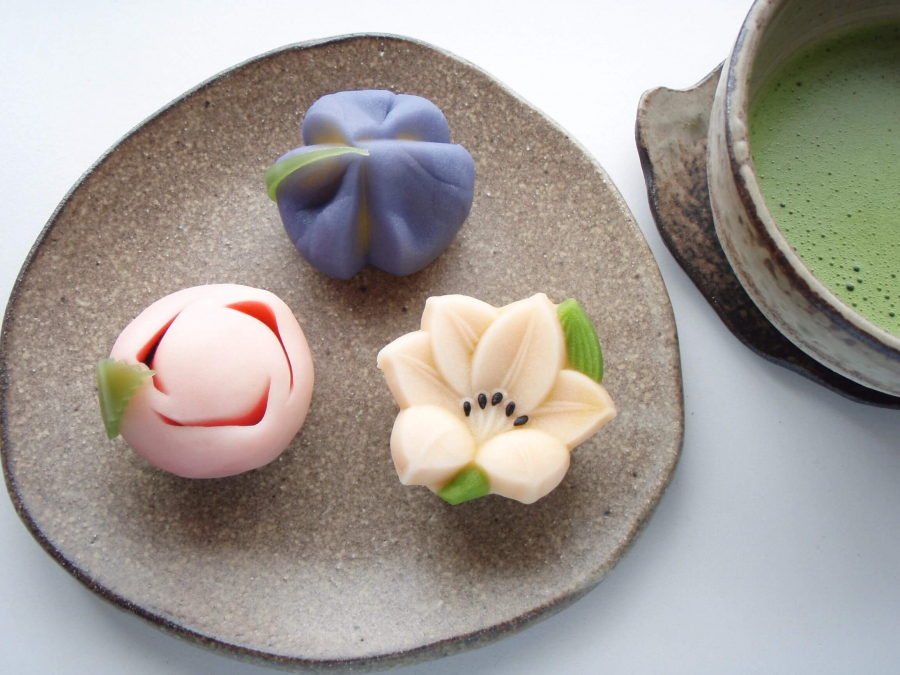


Because this type of sweet is often used as a snack to sip with tea, the sugar content is very high and oil is rarely used. Plant ingredients used to make cakes such as syrup, rice, wheat, red beans... are used more than other types of sweets, although rarely used, fresh, dried or steamed fruits can also be used to make cakes. Because the ingredients are mostly plants, this type of cake is considered good for health.
Sugar is only used in modern times, as white sugar was not easily available before the Edo period in Japan. Before sugar was available and was too expensive like wasanbon, the sweetener used when needed was extracted from persimmons.
The basic ingredients for wagashi include a shell made from white bean starch mixed with a little glutinous rice flour (gyuhi) and sugar water, cooked into a smooth, elastic dough, and food coloring. The filling is simply red bean paste. Sometimes, if you want the wagashi to be shiny, after shaping and shaping it, it will be dipped in a layer of jelly to make it elastic and not deformed.
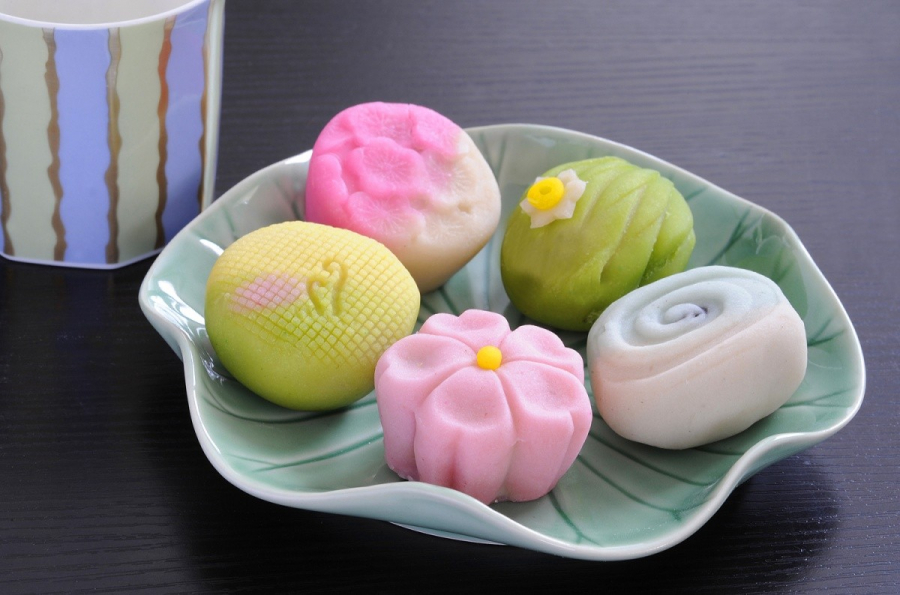
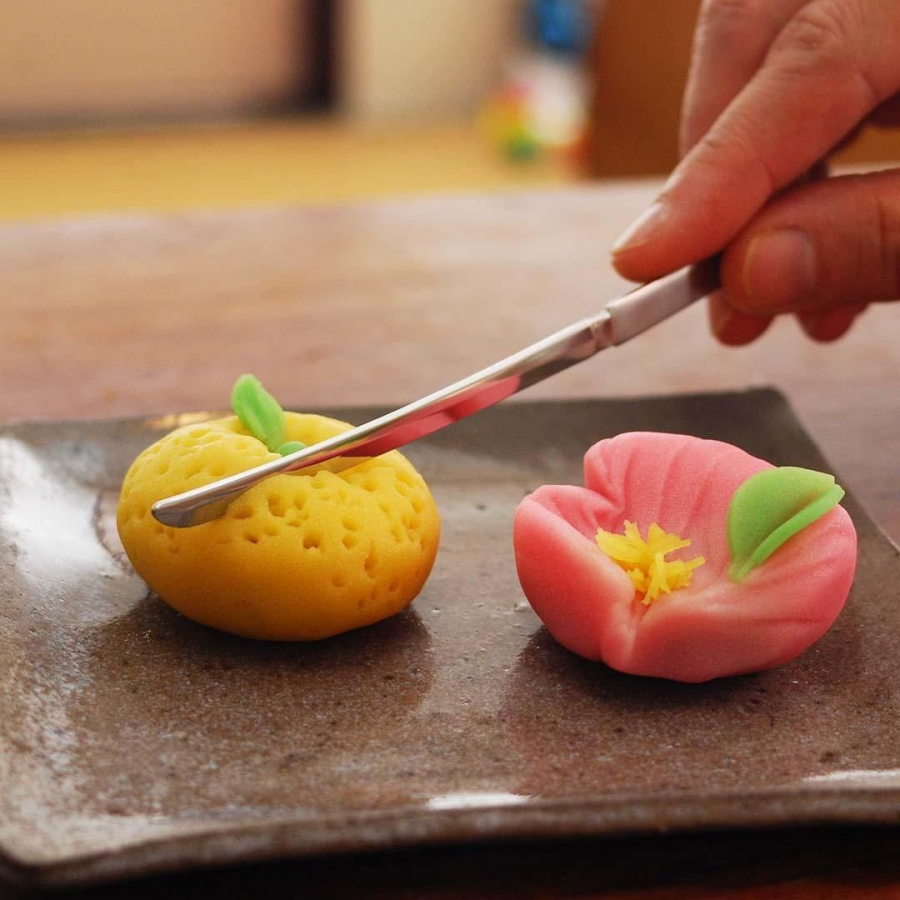
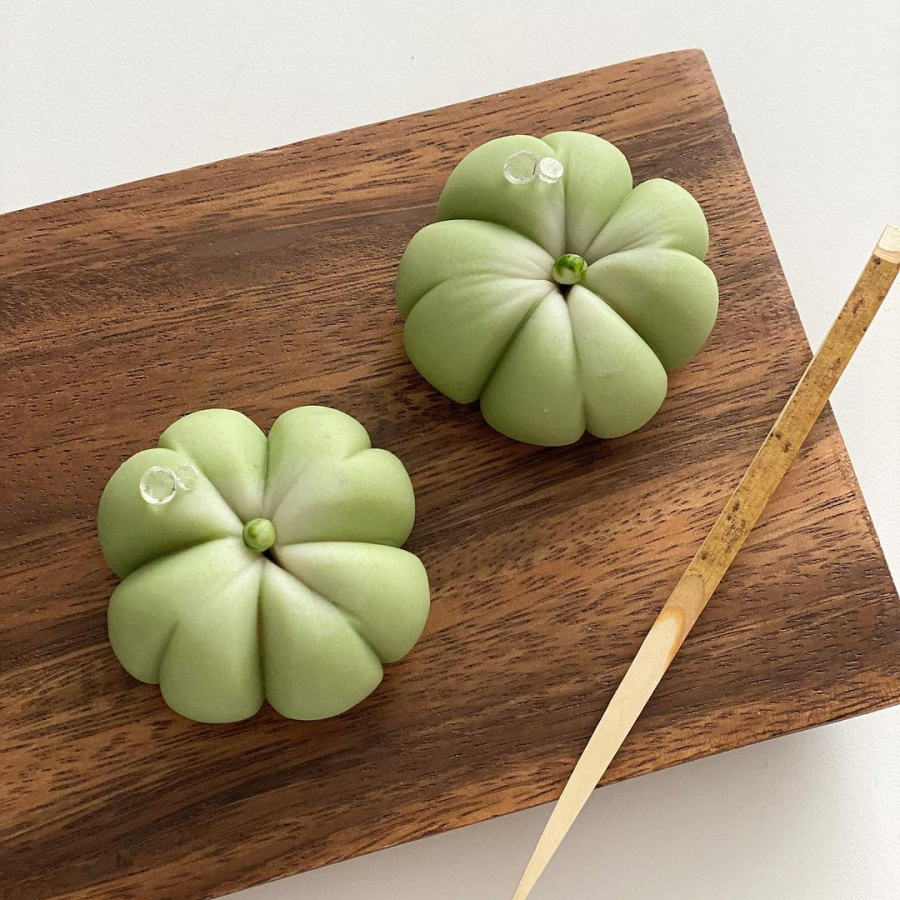
In particular, the Japanese, with the motto "each season has its own food", have typical wagashi cakes for each month of the year as follows:
January: Hanabira Mochi
The Japanese traditionally eat hanabira mochi during the New Year. The cake consists of two thin layers of soft mochi, the outer layer being white rice and the inner layer being light pink, followed by a piece of burdock root (gobo) which is hard and slightly spicy, and finally a layer of white bean paste (anko). When folded, the cake forms a white crescent shape with the light pink mochi layer inside peeking out, giving the cake the shape of a flower petal (hanabira).
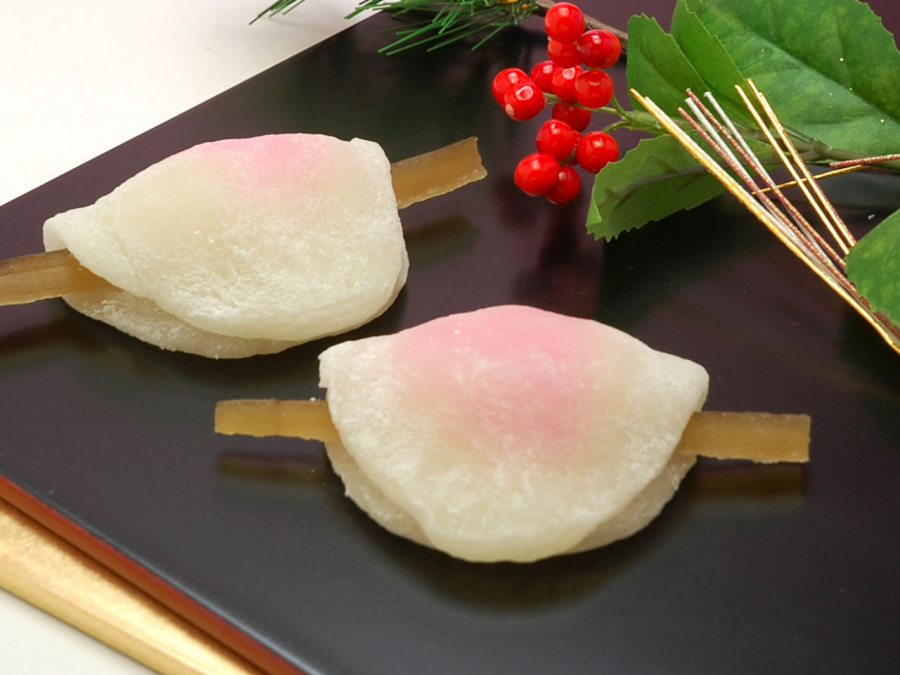
In the past, hanabira mochi was only used as a royal gift for the noble class. At that time, the fillings were usually dried fish (ayu), deer and wild boar meat or radish. During the Edo period (1600-1868), ayu fish and other meats were replaced with burdock root, both of which symbolize longevity, to comply with some Buddhist regulations, at this time the cake was called hishi hanabira. During the Meji period (1868-1912), hanabira mochi became popular with all people in Kyoto.
February: Kobai Cake

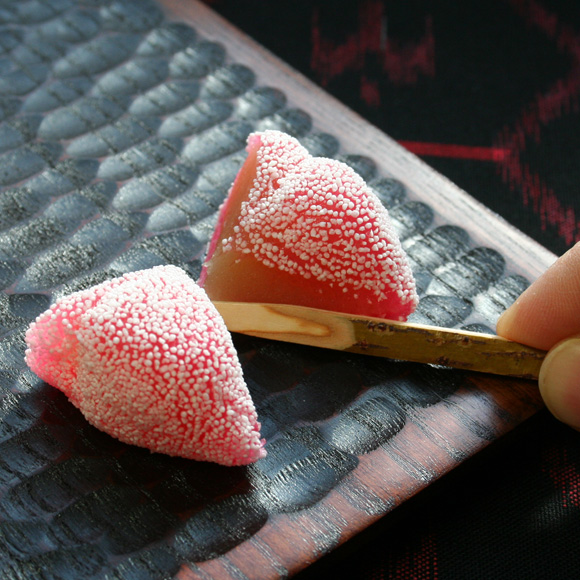
February is the season of ume (apricot) blossoms, so the Japanese make kobai cakes that are typical of this season. Kobai cakes are shaped like small, cute Japanese apricots. They are usually made from steamed bean and barley flour and are pinkish red in color.
March: Hishi Mochi
Hishi mochi is a typical cake for Hina Matsuri (Japanese girls' doll festival held on March 3 every year) with an elegant and sweet taste. If you come to Japan during the holiday, you will see locals buying hishi mochi.

The cake is diamond-shaped and made from rice flour, consisting of 3 layers of cake with 3 colors presented in order: green (mugwort) at the bottom, white (water chestnut) in the middle and pink (jasmine) at the top.

The colors on the cake have many meanings such as green symbolizes the freshness of summer or goodness, white symbolizes snowflakes or purity and pink symbolizes cherry blossoms or freshness.
April: Hanami Dango
Hanami dango is a mochi-like dessert. Hanami dango is often eaten during cherry blossom viewing festivals. It has been popular in Japan since the 1800s.
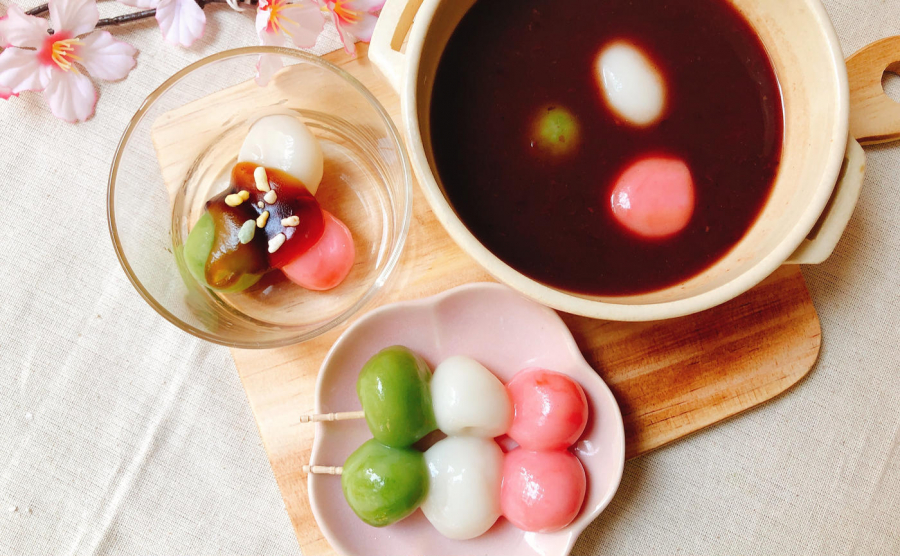
The cake is made from sticky rice flour and steamed. It looks similar to Vietnamese banh troi nuoc but is skewered together with a wooden skewer with 3 balls, 3 different colors in order from bottom to top: green - white - pink.
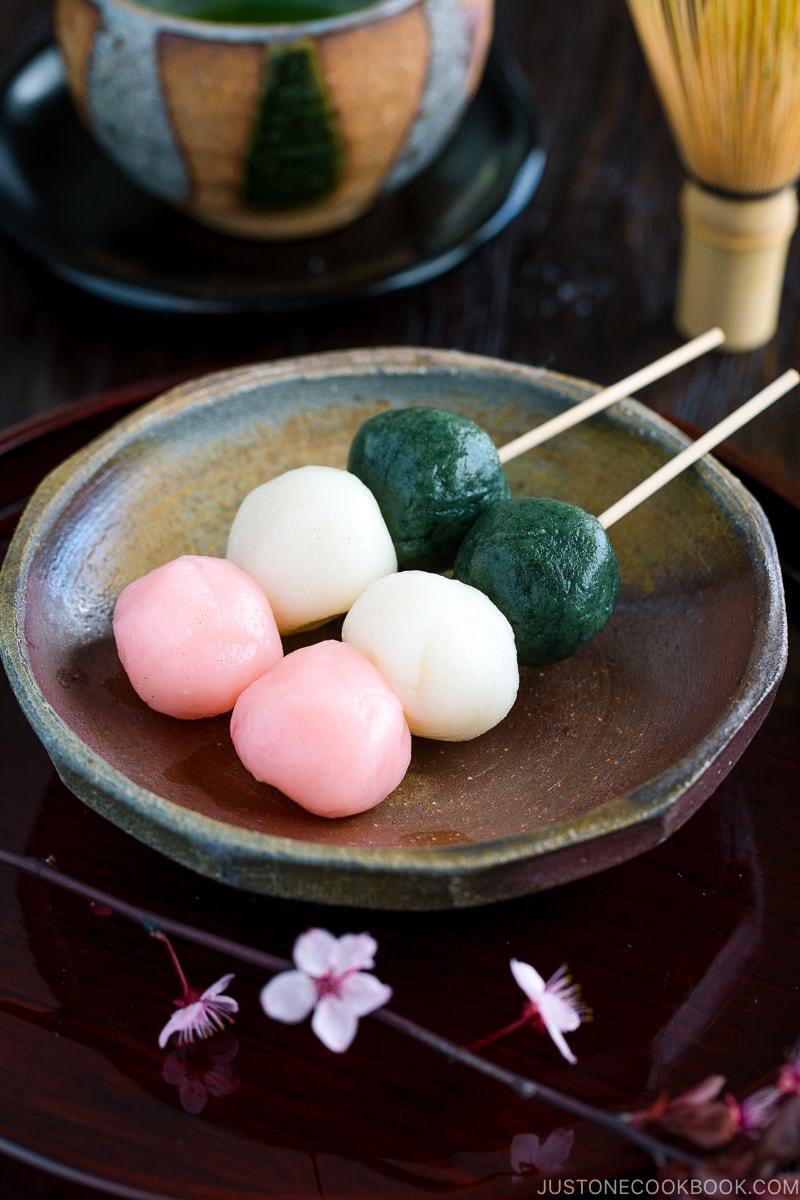
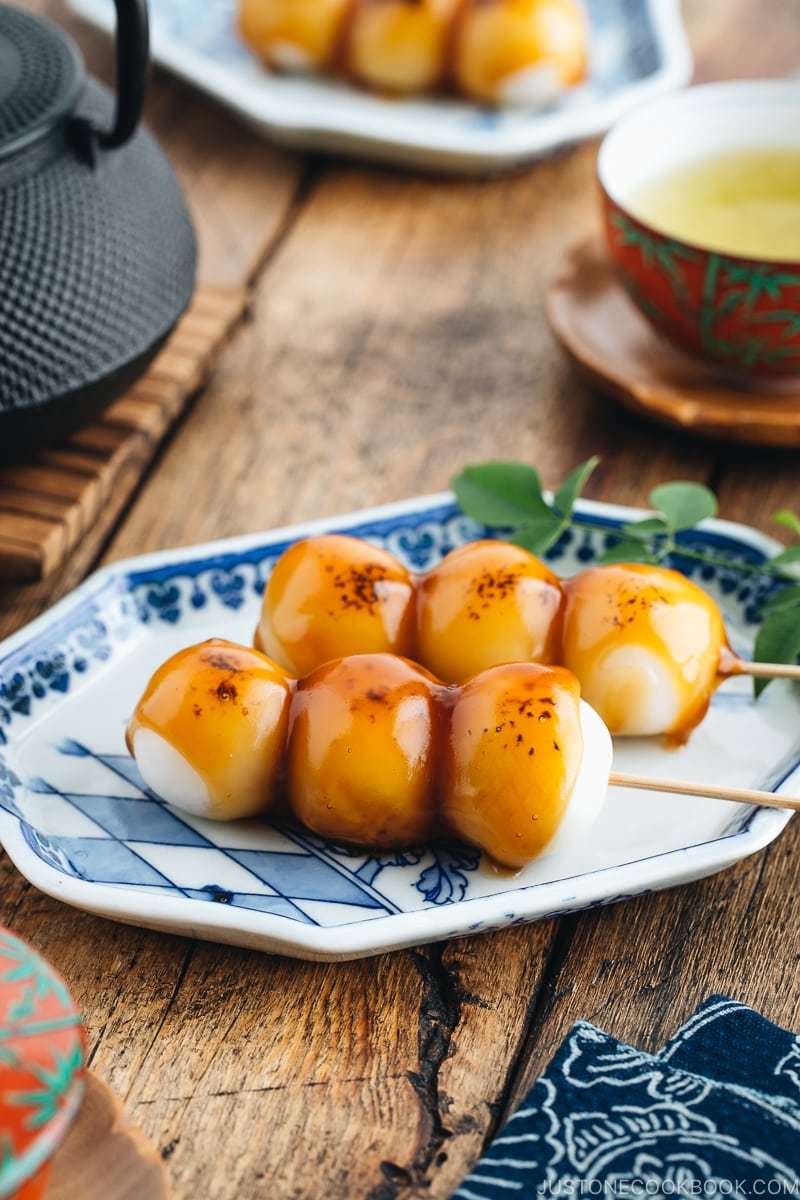
There are two types: a darker type covered in bean paste, and a lighter type grilled with soy sauce called mitarashi dango.
May: Kashiwa Mochi
Kashiwa mochi is eaten on Kodomo no hi (Japanese Boys' Day, held on May 5th every year). It is a flat round cake made from uruchi rice flour, divided into two parts, with beans in the middle and oak or sycamore leaves on the outside.
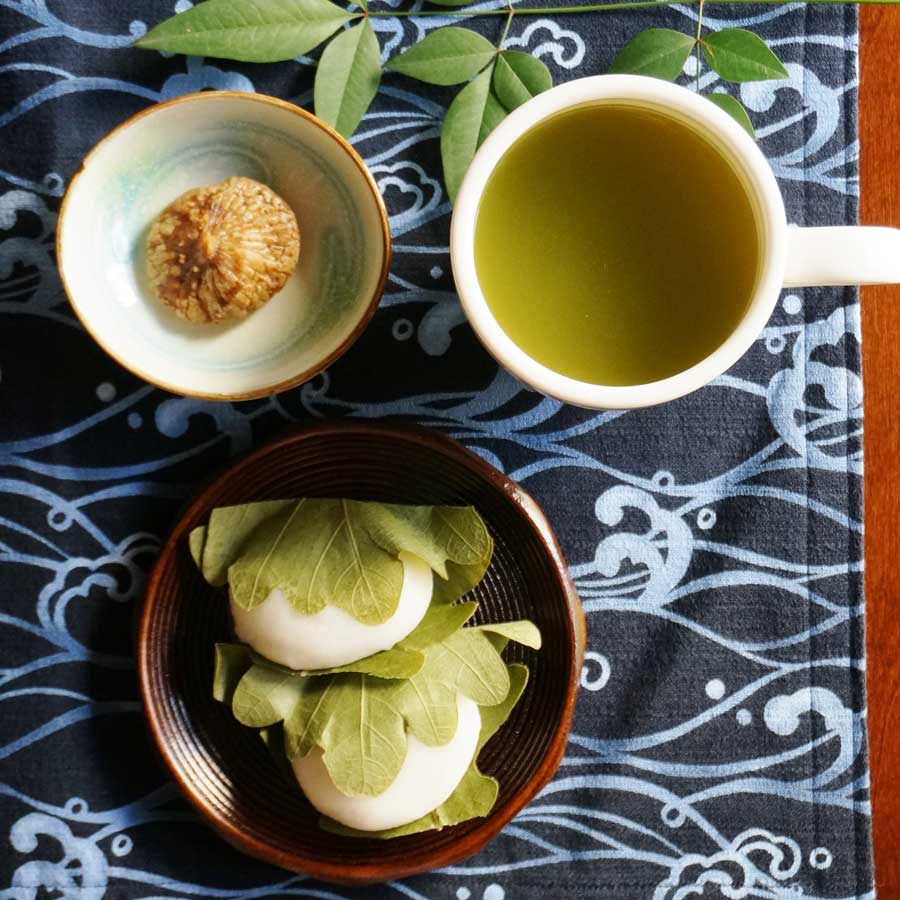
Old oak leaves do not fall until new buds grow, so they are considered to bring good luck, and also symbolize the will to overcome difficulties and challenges of men. Before the invention of oak leaf-wrapped cakes, and in areas with few native oak trees, there existed cakes wrapped in ti giai leaves.
June: Ajisai Cake

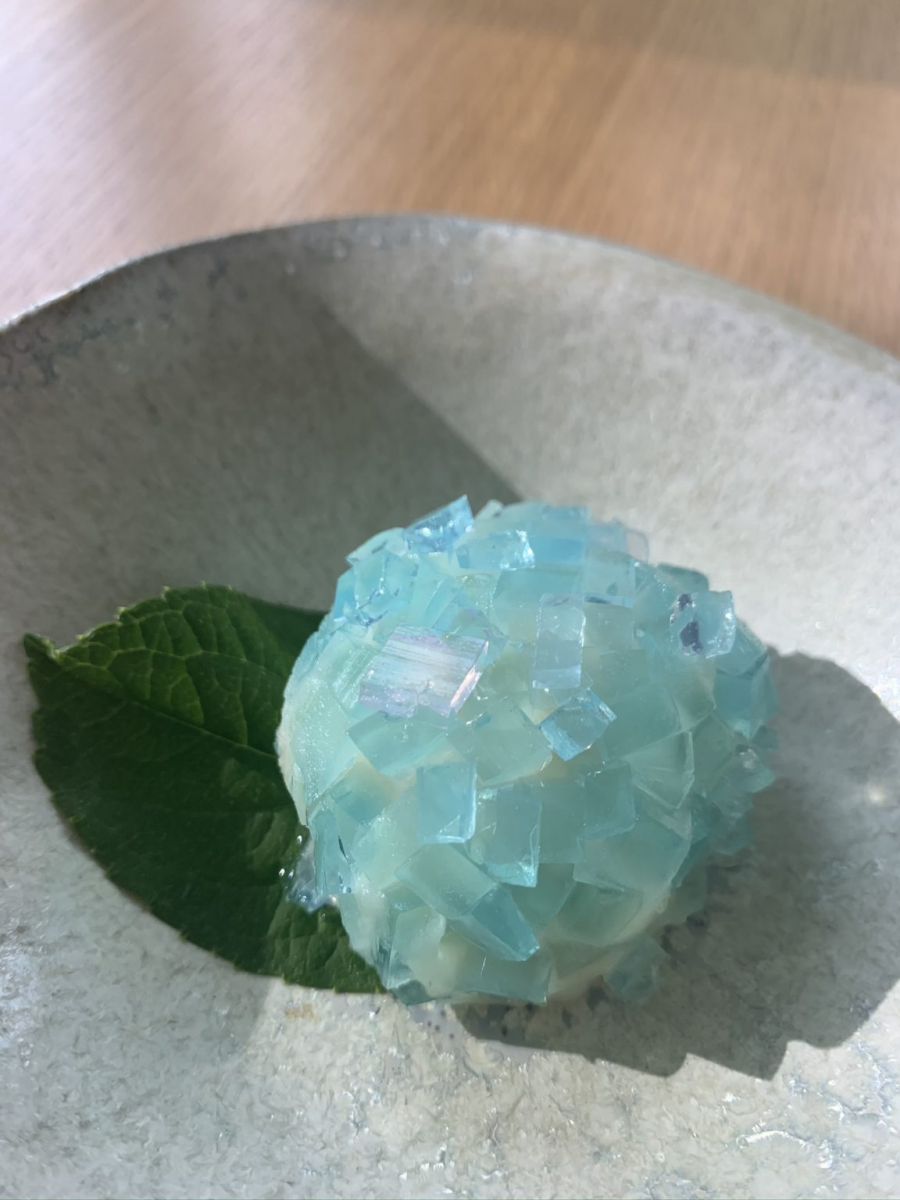
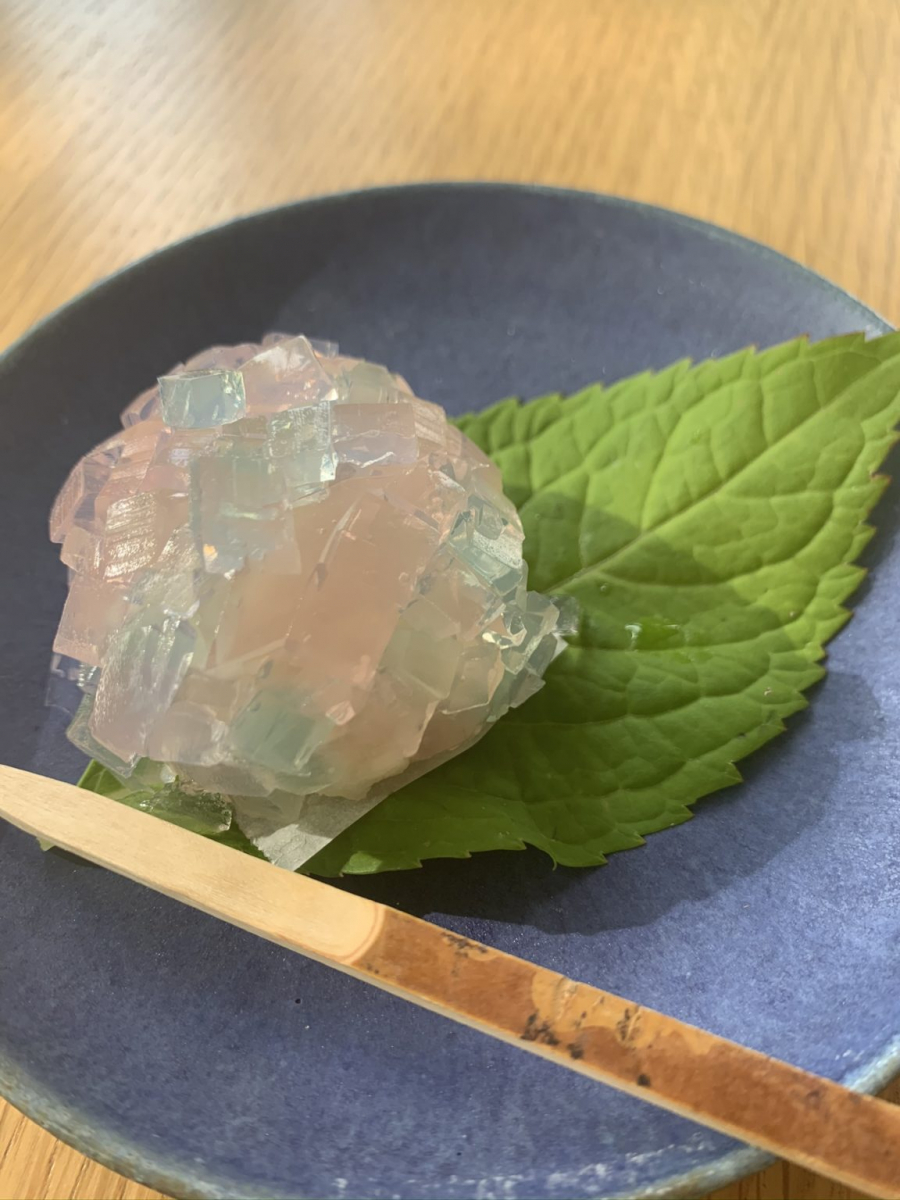
Ajisai is a red bean jelly filled with white bean paste and shaped like ajisai (hydrangea). This cake will make you forget the gloomy weather of July, the rainy season.
July: Rakugan rice cakes and Aruheito candy
In July, Japanese people often eat rakugan rice cakes made from a mixture of rice flour (grain) kneaded with malt and wasabon sugar, pressed into a mold and dried to a moisture content of less than 10%.
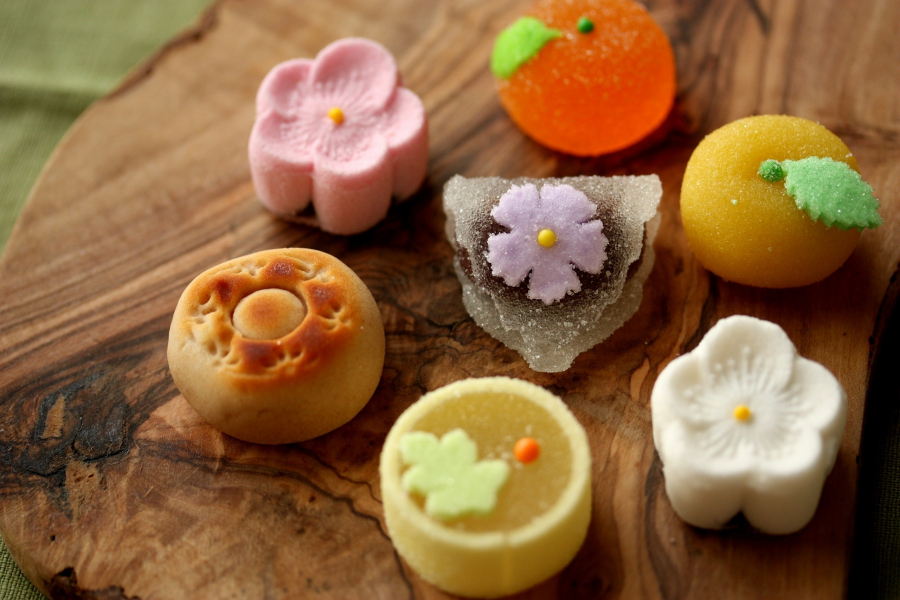
Originally, rakugan had black sesame sprinkled on top to look like a flock of geese swooping down to the ground, which is one of the famous beautiful scenes of Omi, so the name rakugan was born. The cake is considered a high-class sweet by the Japanese, so it is often served to guests at tea parties.

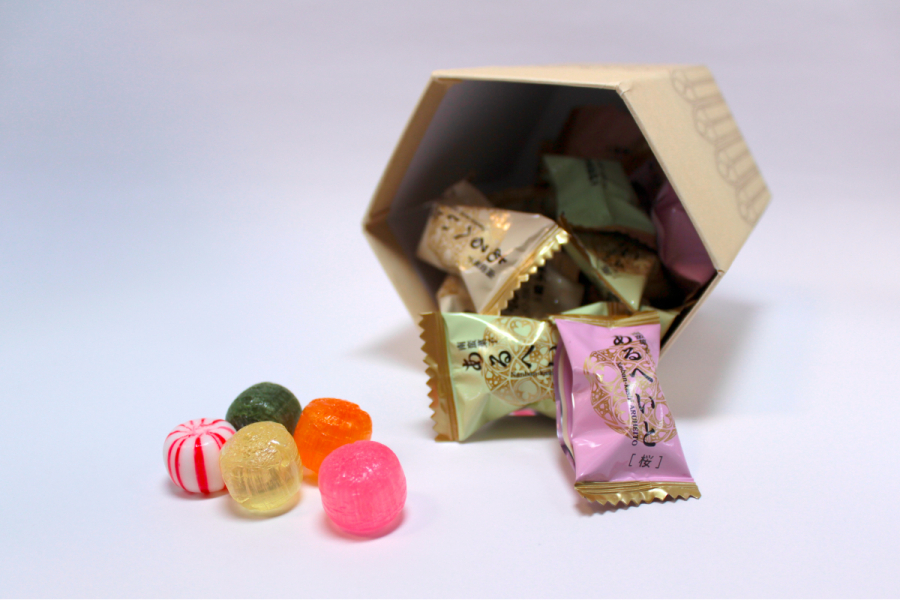
In addition, aruheito candy, a type of candy used for decoration, is also popular in July. This candy lasts a long time and is often contained in cute, small compartment-shaped boxes.
August: Mizu yokan soft bean jelly

Mizu yokan is a dessert made from red bean paste, agar, and sugar. In some places, the cake has other variations, such as replacing the red bean with white beans. The cake is usually rectangular and is sliced when served. Mizu yokan is delicious when chilled, so it is suitable for eating in the hot summer.
September: O-hagi Cake

When it comes to food offerings during the Autumn Equinox, o-hagi is a must-have. O-hagi are steamed glutinous rice balls that are shaped into balls and then covered in red bean paste. They resemble the flowers of the Japanese clover (hagi), hence their name. They can be purchased at supermarkets or made at home.
October: Kuri no yaki-gashi

During the fall, many chestnut sweets are sold all over Japan. Among them is kuri no yaki-gashi, or chestnut stewed in syrup or sugar water. It is made from chestnut dough and filled with chestnuts, then baked. Kuri no yaki-gashi originated from the tradition of Japanese children picking up fallen chestnuts in the fall.
November: Momiji Cake
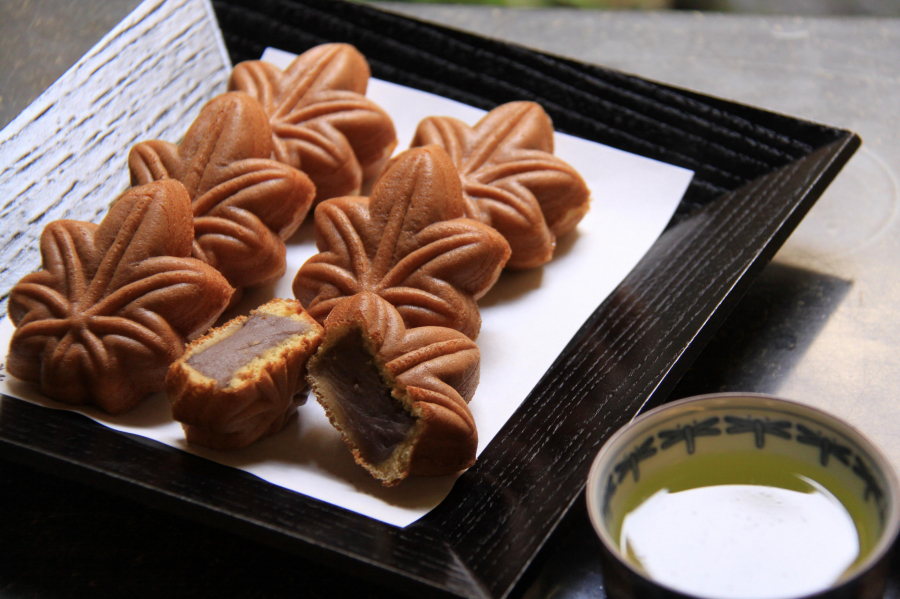
Momiji is a maple leaf-shaped cake (momiji). The cake is made from kneaded bean flour, shaped into the shape of autumn maple leaves. There are many types of fillings for diners to choose from according to their preferences. On autumn evenings, Japanese people often hold parties to watch the moon while enjoying momiji and listening to the cheerful sounds of insects.
December: Yuzu manjū

Yuzu manjū are shaped like a yuzu fruit. The rind of the yuzu fruit is grated, mixed with wheat flour and yamato sweet potato flour, and steamed. The mixture is then wrapped around bean jam, creating a manju shaped like a yuzu fruit. The mild fragrance of the yuzu fruit makes yuzu manjū a perfect winter treat.



























